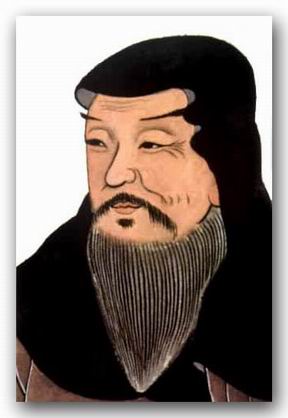 The year of birth and death is unknown. He was a famous Confucian scholar, litterateur, exegete and lexiconist during the Eastern Han Dynasty in my country. According to Zhang Huaiguan's "Shu Duan" of the Tang Dynasty, Xu Shen died at the end of Emperor An of the Eastern Han Dynasty (about 125 years). Later generations studied his deeds and believed that Xu Shen was born during the reign of Emperor Ming of the Eastern Han Dynasty (before 75 years) and died during the reign of Emperor Huan of the Eastern Han Dynasty (after 147 years). A native of Zhaoling Wansuili, Runan (now east of Yancheng County, Henan Province). The word Shuzhong. Offering wine to Taiwei Nange, the principal and others. People call him Controller Xu or offer him wine. He was honest and sincere in nature, and he was well versed in the classics. He was sometimes said to be "unparalleled in the Five Classics". Work documents. Wang Min of the Northern Wei Dynasty listed fifty-nine people from Qin, Han, and Wu in his "Ancient and Modern Writings", among which Xu Shen was among them. The following volume of "Shujuan" written by Zhang Huaiguan of the Tang Dynasty says: "Xu Shen Shao was fond of ancient learning, and liked correct writing. He was especially good at small seal script. He imitated Li Si and learned it very well." He listed his small seal script as a top grade. Xu Shen uses seal script as the orthographic character; he is the author of fourteen volumes of "The Different Meanings of the Five Classics", "Huainanzi Commentary", "The Classic of Xiaojing" and "Shuowen Jiezi". There is a biography in Volume 79 of "Book of the Later Han Dynasty".
The year of birth and death is unknown. He was a famous Confucian scholar, litterateur, exegete and lexiconist during the Eastern Han Dynasty in my country. According to Zhang Huaiguan's "Shu Duan" of the Tang Dynasty, Xu Shen died at the end of Emperor An of the Eastern Han Dynasty (about 125 years). Later generations studied his deeds and believed that Xu Shen was born during the reign of Emperor Ming of the Eastern Han Dynasty (before 75 years) and died during the reign of Emperor Huan of the Eastern Han Dynasty (after 147 years). A native of Zhaoling Wansuili, Runan (now east of Yancheng County, Henan Province). The word Shuzhong. Offering wine to Taiwei Nange, the principal and others. People call him Controller Xu or offer him wine. He was honest and sincere in nature, and he was well versed in the classics. He was sometimes said to be "unparalleled in the Five Classics". Work documents. Wang Min of the Northern Wei Dynasty listed fifty-nine people from Qin, Han, and Wu in his "Ancient and Modern Writings", among which Xu Shen was among them. The following volume of "Shujuan" written by Zhang Huaiguan of the Tang Dynasty says: "Xu Shen Shao was fond of ancient learning, and liked correct writing. He was especially good at small seal script. He imitated Li Si and learned it very well." He listed his small seal script as a top grade. Xu Shen uses seal script as the orthographic character; he is the author of fourteen volumes of "The Different Meanings of the Five Classics", "Huainanzi Commentary", "The Classic of Xiaojing" and "Shuowen Jiezi". There is a biography in Volume 79 of "Book of the Later Han Dynasty".
"Shuowen Jiezi" contains 9,353 main text words and 1,163 redundant text words, totaling 10,516 words. The whole book uses 133,441 words for explanations, and is the first to arrange 540 radicals. "Shuowen Jiezi" is my country's first broad dictionary that uses the six-book theory to systematically analyze glyphs and explain character meanings. It preserves most of the pre-Qin fonts and many exegesis of characters from the Han Dynasty and before, reflecting the appearance of ancient Chinese vocabulary. It is the first dictionary in the history of Chinese philology that analyzes glyphs, explains word meanings, and identifies pronunciations. It is also the only classic work on Chinese characters since 1800. It is the basis for our study of ancient literature and ancient Chinese today. Essential material. Without the circulation of this book, we would not be able to understand the seal scripts since the Qin and Han Dynasties, let alone the oracle bone inscriptions of the Shang Dynasty, the bronze inscriptions of the Shang and Zhou Dynasties, and the ancient inscriptions of the Warring States Period. Therefore, it not only had a huge impact on the study of Chinese characters in the past, but also has great significance for current and future research on Chinese characters.








